- Email: info@caskspirits.co.uk
- Phone : (+44) 020 3642 8968
- Website : www.caskspirits.co.uk
- Address: 124 City Road, London, EC1V 2NX
- VAT No: 471 3722 96
- WOWGR No: 471 3722 96 0001
- Excise ID: GBOG471372200
© 2024 Cask Spirits. All rights reserved. Designed By: Dream Steps






